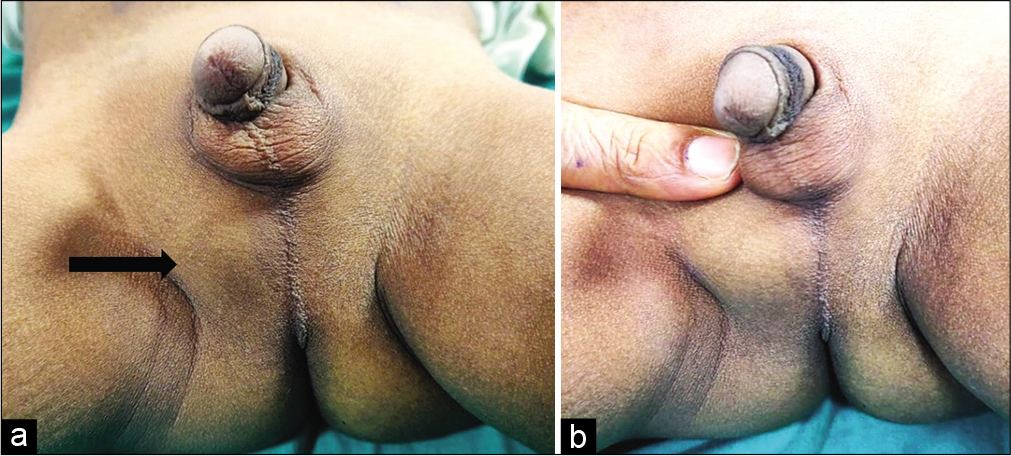Translate this page into:
Perineal testis: Rare entity with a fascinating history
*Corresponding author: Dr. Pradnya S. Bendre, Department of Pediatric Surgery, Bai Jerbai Wadia Hospital for Children, Mumbai, Maharashtra, India. suhaspradnya@yahoo.com
-
Received: ,
Accepted: ,
How to cite this article: Banerjee A, Bendre PS. Perineal testis: Rare entity with a fascinating history. Wadia J Women Child Health 2022;1(1):43-4.
A true undescended testis (UDT) has halted somewhere along the normal path of descent from the retroperitoneum to scrotum. An ectopic UDT is one that has deviated from that path and can be found in the perineum, femoral canal, penopubic area or even contralateral hemiscrotum (transverse testicular ectopia).[1]
A perineal testis is located in the perineum [Figure 1a] or high on the medial aspect of the thigh lateral to the scrotum. The significance is that, unless specifically looked for, it can easily be missed at clinical examination [Figure 1b] and result in an erroneous conclusion of impalpable or absent testis. Interestingly, the first successful orchidopexy described by Annandale in the British Medical Journal in 1879 was performed on a 3-year-old boy with a perineal ectopic testis.[2] The indication for surgery was to avoid future inconvenience when horse riding!

- (a) A faint bulge of the right-sided ectopic testis seen in perineum (arrow); (b) Confirmed on palpation.
Declaration of patient consent
The authors certify that they have obtained all appropriate patient consent.
Financial support and sponsorship
Nil.
Conflicts of interest
There are no conflicts of interest.
References
- Undescended testis, torsion and varicocele In: Coran AG, Adzick NS, Krummel TM, Laberge JM, Shamberger RC, Caldamone AA, eds. Pediatric Surgery (7th ed). Philadelphia, PA: Saunders; 2012. p. :1003-19.
- [CrossRef] [Google Scholar]
- Case in which a testicle congenitally displaced into the perineum was successfully transferred to the scrotum. Br Med J. 1879;1:7-8.
- [CrossRef] [PubMed] [Google Scholar]





